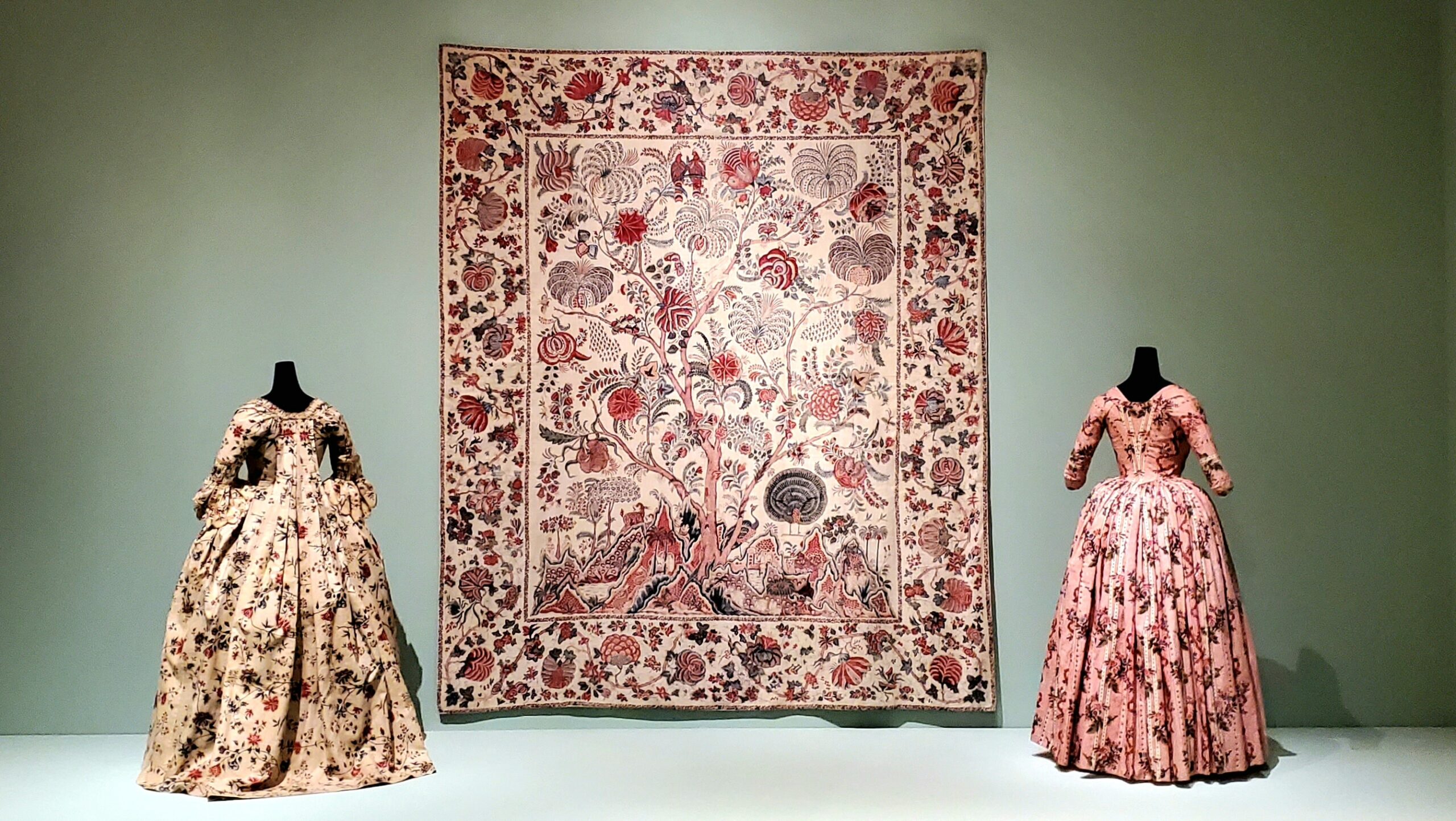
There is evidence a textile trade existed between India and Egypt as early as the second millennium BCE. A discovery made in the 1930s along the Red Sea ports of Egypt revealed textile fragments considered to be the earliest examples of chintz, a fabric recognized for its significance in revolutionizing fashion, industry and global trade throughout history.

Philip Hu, curator of Asian Art at the Saint Louis Art Museum, says the complex methods for producing dyes and mordants to create hand-painted and -printed cloth in fade-resistant colors had been perfected by Indian artisans many centuries ago.
“Some of the oldest examples are from the 13th and 14th centuries, found buried in Egypt and known as the earliest major group of fabrics surviving from India,” Hu noted. “In these fragments, you can still see the colors intact. In Egypt, it’s so very dry and arid, and that’s the reason why they were so well-preserved, why they survived so long.”
The textile fragments are among the rarest objects on display in “Global Threads: The Art and Fashion of Indian Chintz,” an exhibition that opens Sunday, Oct. 23, at the Saint Louis Art Museum.
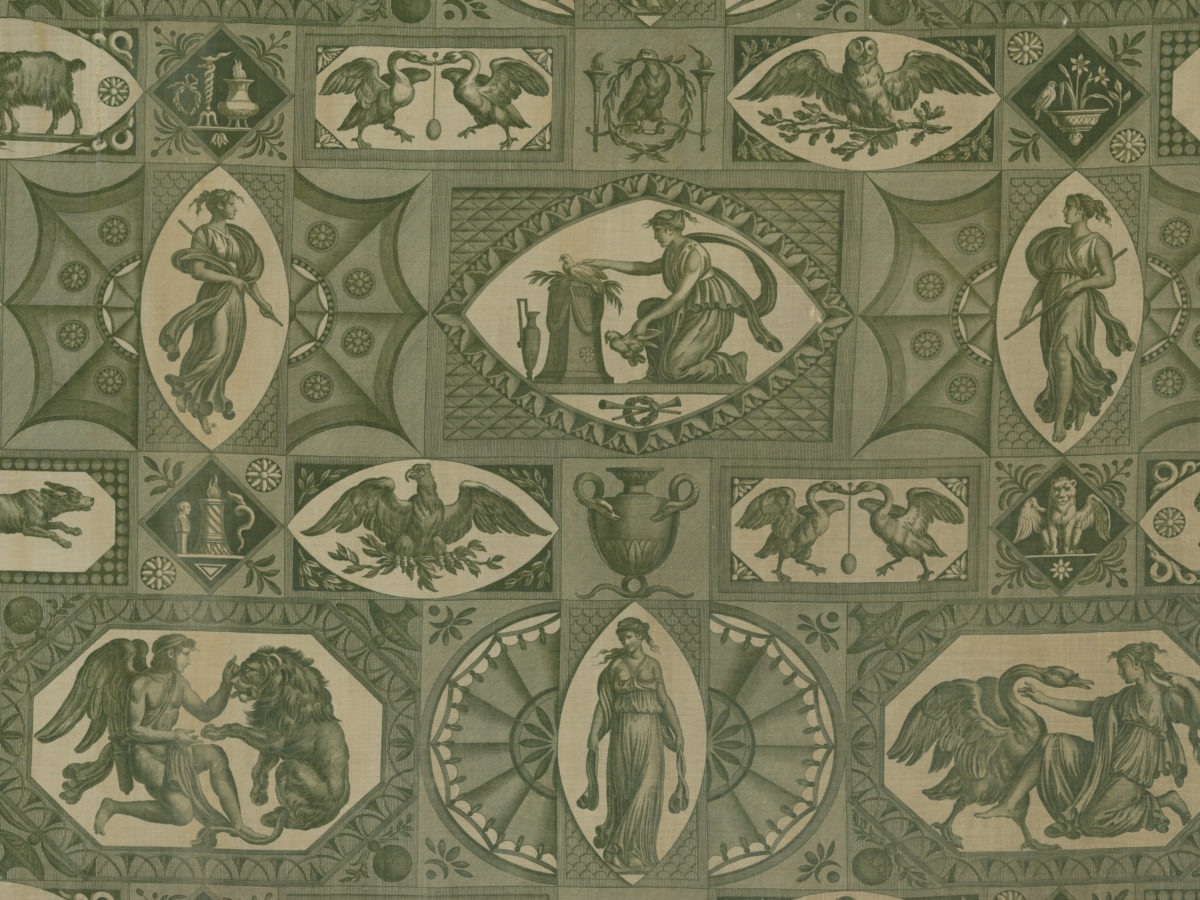
The exhibit chronicles the history of chintz and how the vibrant, colorful cloth that doesn’t easily fade with washing and exposure to light has captivated consumers all over the world.
“Our show really tries to tell the story of how Indian chintz became very popular in many, many countries of the world,” Hu said. “In the show, we’ll take you from India to Egypt to Sri Lanka, Iraq, Indonesia, Thailand, Armenia, Japan, to France and the Netherlands, to Great Britain – all these countries eventually wanted to import chintz from India – and that’s why this textile is called the ‘cloth that changed the world.’”
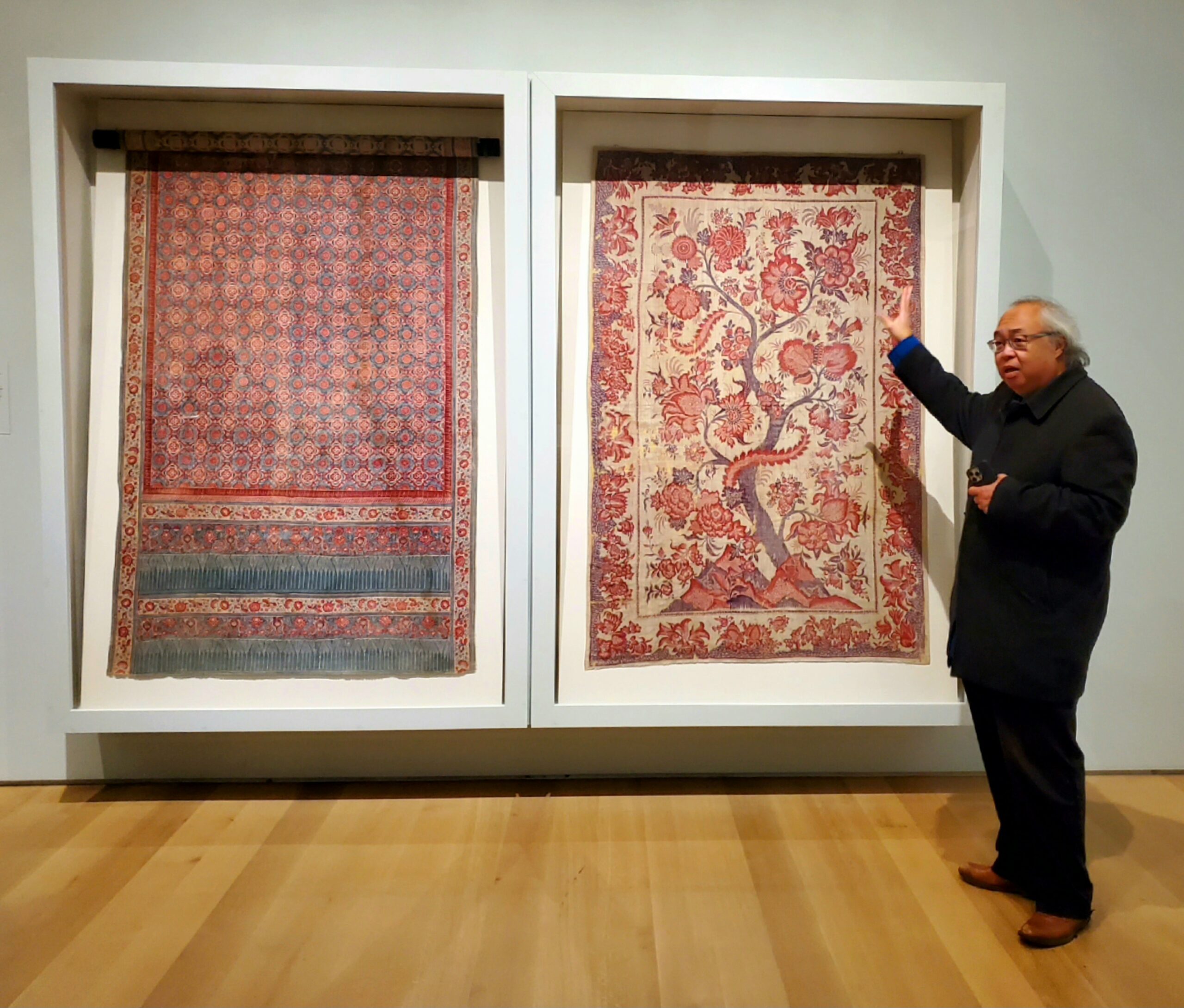
Despite its global distribution, the artisan method of producing chintz is specific and requires great skill.
“Chintz is cotton cloth that is either painted by hand or the designs can be block-printed, using blocks, which are imprinted by hand onto each block to make the design. And you have to be very careful that the blocks don’t overlap, that they align exactly – so it’s a very skilled kind of textile making,” Hu explained.
Hu says while floral representations are the most common design, there is no one look to chintz.
“Chintz can be figural, historical, a narrative that tells a story, floral or geometric,” he said.
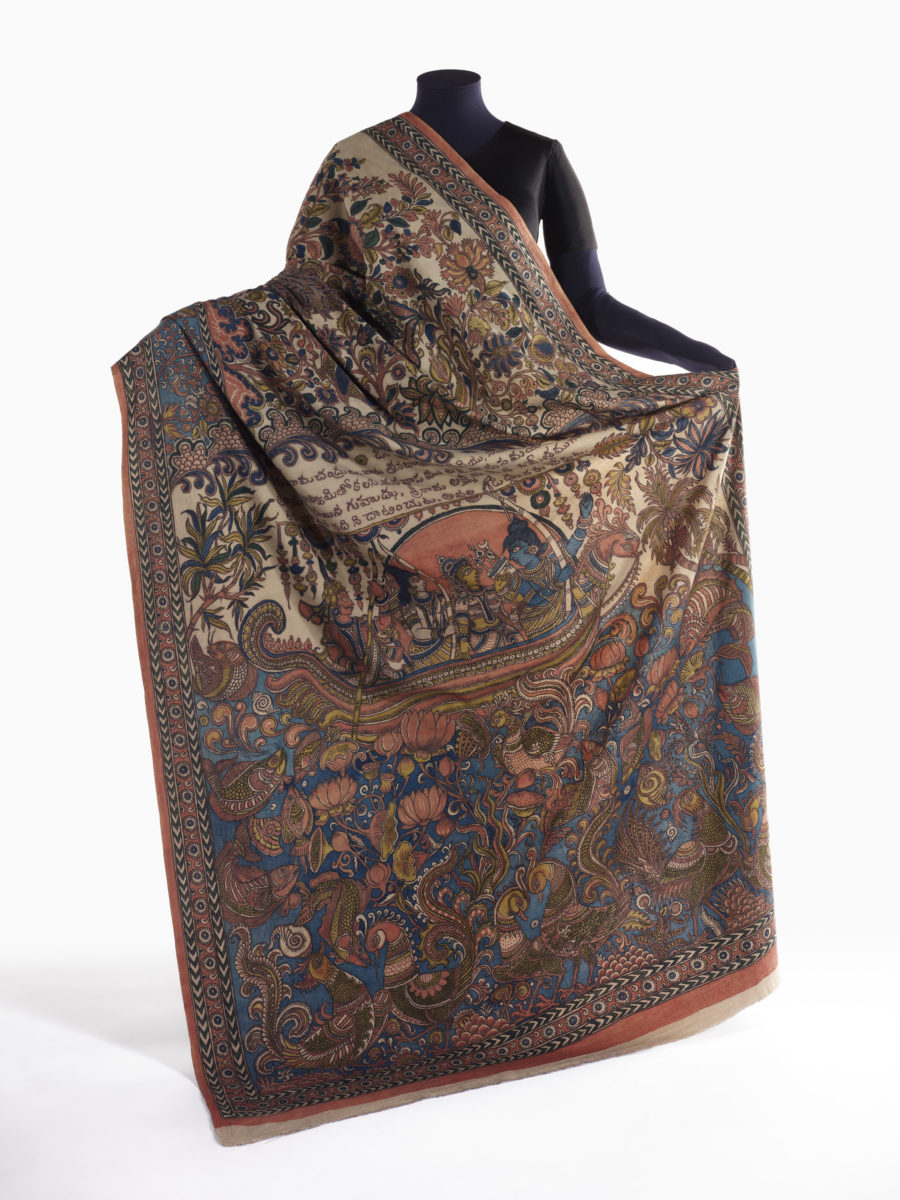
The exhibition is drawn mainly from the collection of Indian chintz at the Royal Ontario Museum in Toronto. Other objects come from private collections, as well as from the Saint Louis Art Museum’s own collection.
In one of the galleries, there is a hanging garment from the 18th century. Made for the Sri Lankan market, it has a large flowering tree in the center anchored by mountains and an intricate floral border. While not much is known about the textile trade between India and Sri Lanka, examples like these, according to experts, hint at wide-ranging tastes, making Sri Lanka likely the most eclectic of all of India’s historic export markets.
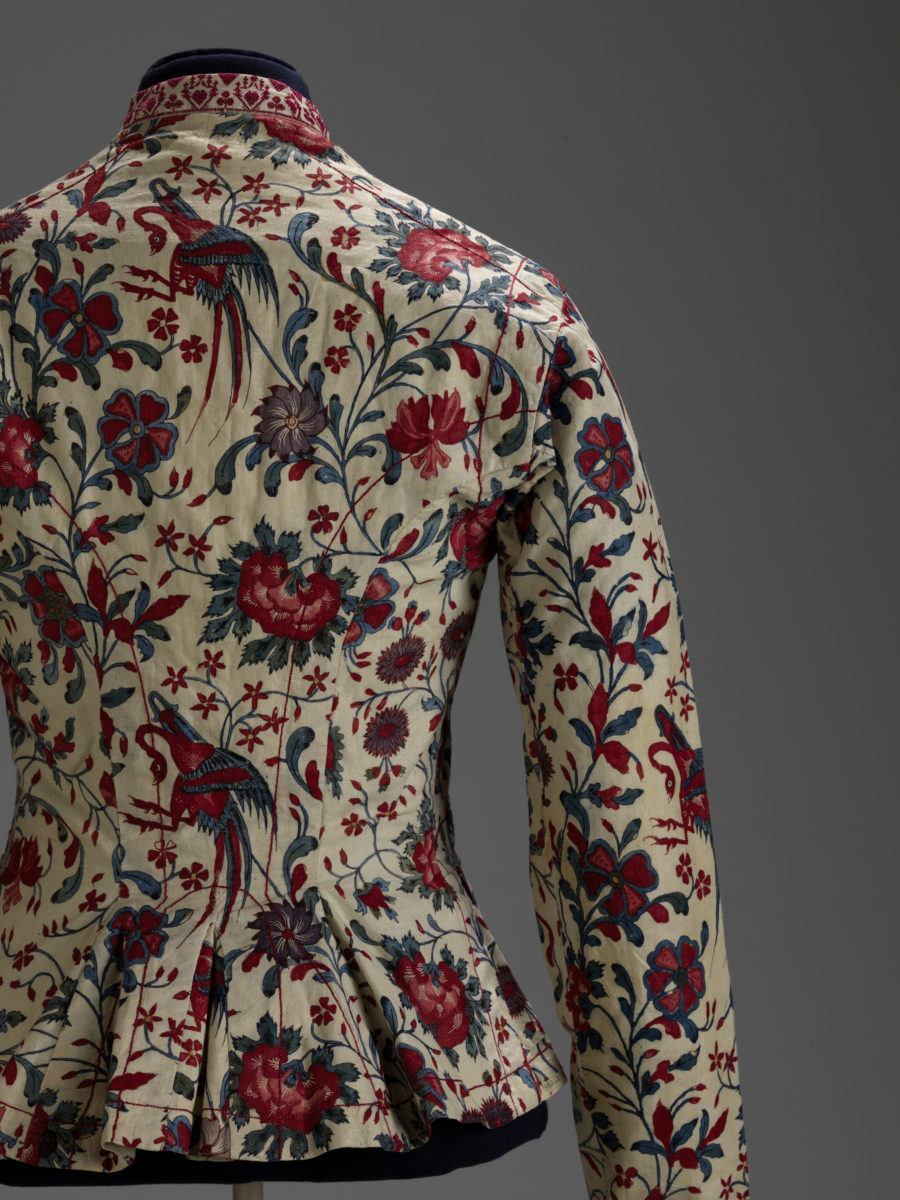
Objects of clothing range from a floral woman’s jacket and a French floral robe lined with silk, both from the 1700s, to a sari and a men’s ensemble created just several years ago.
The exhibition also addresses the historical consequences tied to the production and consumption of cotton, a commodity that “provides a window into slavery as a global economic, cultural and political system touching everyone,” according to Geoff Ward, Washington University professor of African and African American Studies and director of the WashU Slavery Project.
Ward, in a supplemental audio guide to the exhibit, explains how cotton “bound multitudes to the violence of slavery and to the fight for freedom.” He also tells the story of how St. Louisan Elizabeth Keckley, who later became Mary Todd Lincoln’s personal seamstress, bought her own freedom in the mid-1800s with the proceeds from the sale of her coveted dresses.
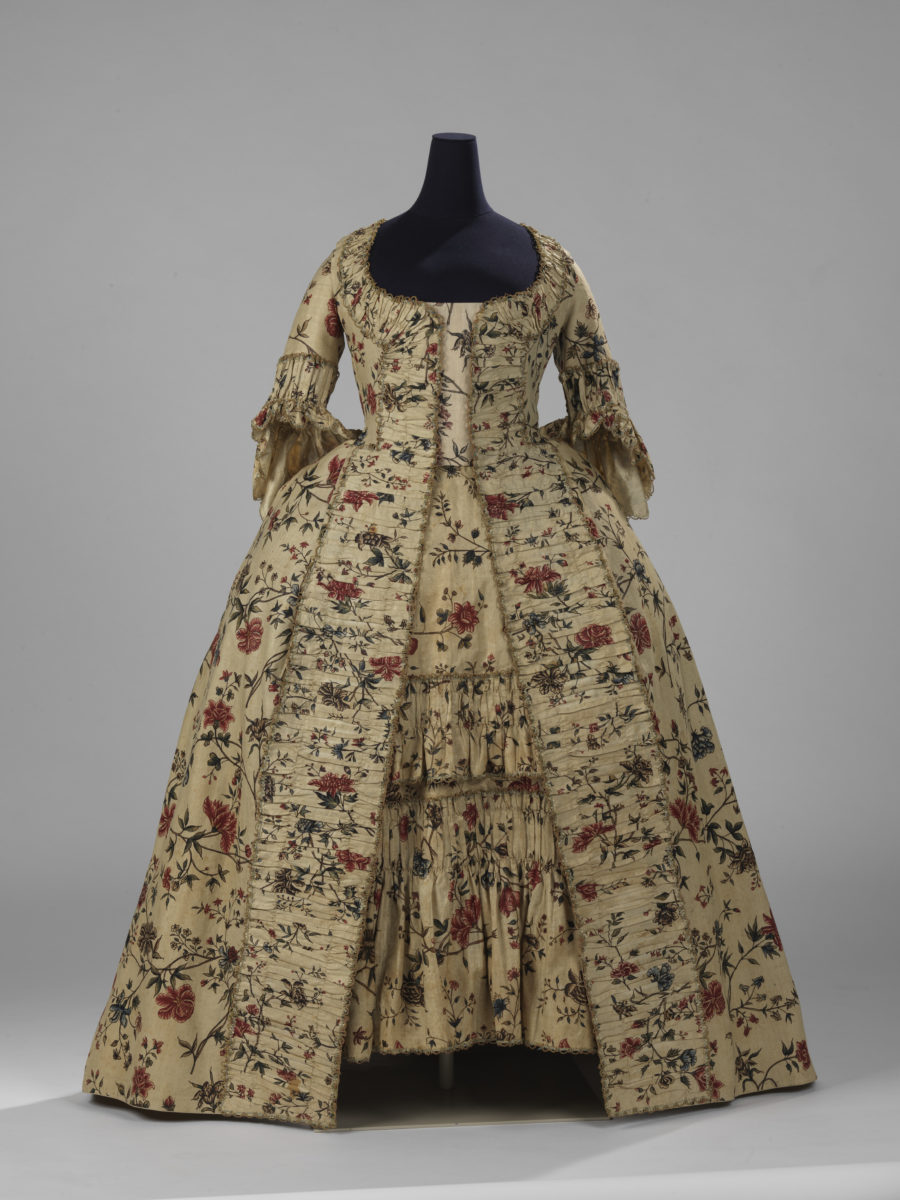
While the method and craftmanship involved in producing chintz was long established over millennia, “chintz is alive and well today,” according to Hu, who says while working on the exhibit, he discovered so much more about the incredibly complicated techniques and processes required for making chintz, as well as its sustainability.
“Of course, we learn about that from people today who are making it – we have videos of it – but it would have been done the very same way centuries ago,” he explained. “The materials they used were found in the natural world – plants, herbs and other kinds of materials – that would combine to make different colors. India had these plants to use when others didn’t, and they were able to harness what they had in nature to make these incredible colors.”
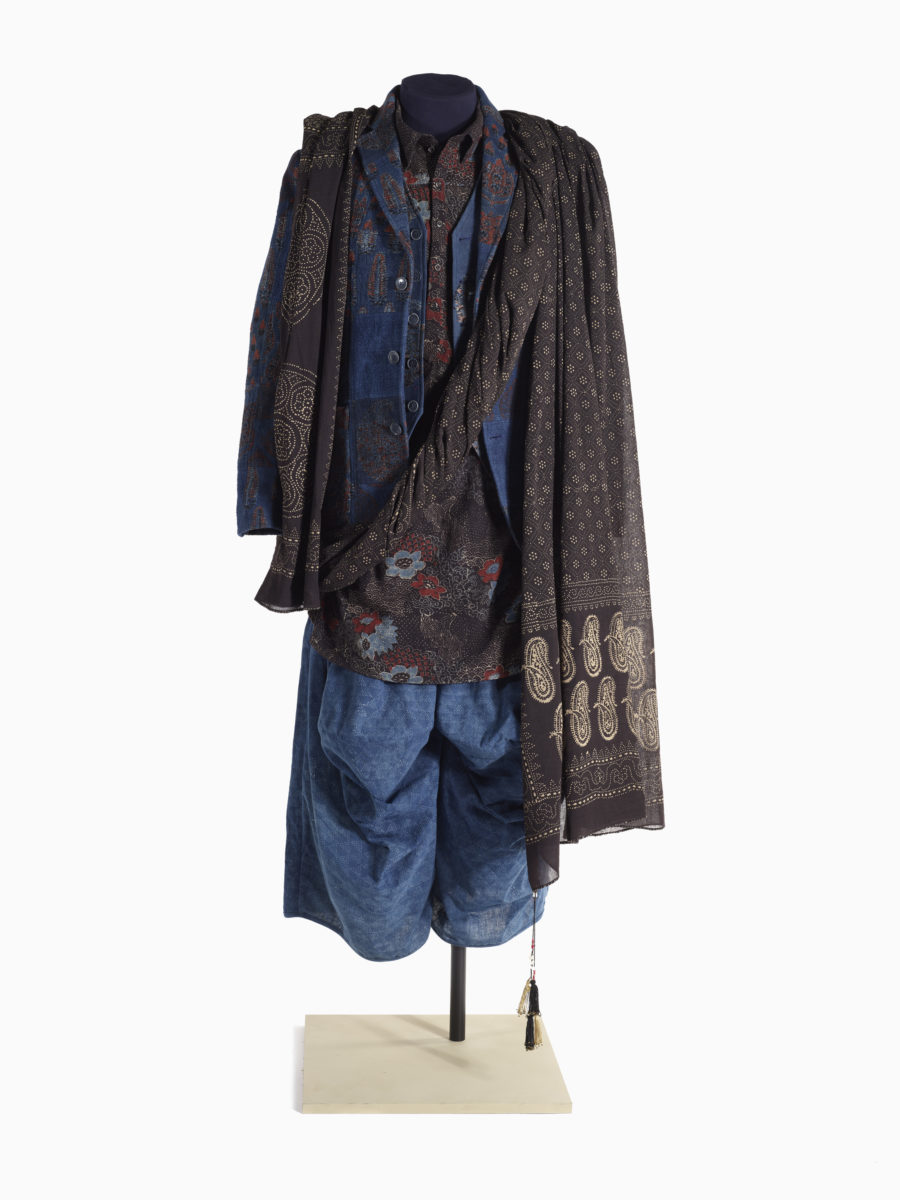
Hu adds another innovation borne out of chintz-making was the dye.
“They were able to make the dyes colorfast, vibrant and interesting – more or less permanent and wouldn’t wash away so easily,” he said. “That’s why chintz became so popular in Europe when they heard about it. People in Europe at the time dressed in either linen or wool and those fabrics are not conducive to washing – chintz really was a revolutionary textile.”
“Global Threads,” co-curated by Hu and assistant curator of Decorative Arts and Design Genevieve Cortinovis, will be on view Oct. 23 through Jan. 8. Tickets are $12 for adults, $10 for seniors and students and $6 for children 6 to 12. The exhibit is free on Fridays and free any time for museum members. For more information, visit the Saint Louis Art Museum’s website.





